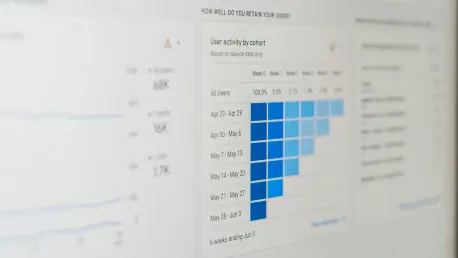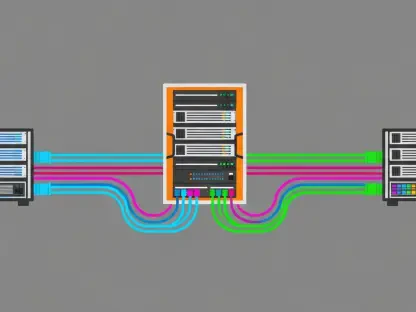In today’s data-driven world, having a robust list of data analytics tools and skills on your resume is essential to distinguish yourself in a competitive job market. This guide serves as a comprehensive resource for data analysts—from aspiring to seasoned professionals—intending to enhance their job prospects by showcasing a wide array of data analytics tools and proficiencies.
The Importance of Highlighting Data Analytics Tools
Demonstrating Expertise
Presenting a well-crafted list of data analytics tools and skills on your resume offers myriad benefits. First and foremost, it demonstrates your proficiency with industry-standard tools and methodologies, effectively showcasing your capabilities as a data analyst. Possessing a strong command of recognized tools not only highlights your technical prowess but also reflects your adaptability and readiness to tackle various data challenges. Additionally, articulating your expertise with specific tools such as SQL, Python, and Tableau can make a substantial difference in capturing the attention of hiring managers who seek candidates with specialized technical abilities.
Moreover, emphasizing your expertise in data analytics tools can play a pivotal role in career advancement. Showing that you are adept at using the latest tools and technologies indicates that you are a forward-thinking professional who is committed to continuous learning and professional development. This can make you a more attractive candidate for senior or specialized roles, where technical mastery is often a key requirement. Therefore, a detailed and well-structured skills section on your resume not only showcases your current capabilities but also signals your potential for growth and innovation in the field.
Increasing Visibility
Ensuring your resume is optimized for Applicant Tracking Systems (ATS) enhances the likelihood that it will reach hiring managers. ATS optimization is a crucial step in guaranteeing your resume doesn’t get lost in the sea of applications. By strategically placing relevant keywords and phrases aligned with the job description, you can significantly increase your resume’s visibility. This entails incorporating terms that accurately represent your skills and experiences with data analytics tools, such as “data visualization” or “machine learning,” thus ensuring that your resume aligns with the specific criteria set by the ATS.
Besides keyword optimization, a clear and organized format also aids in enhancing your resume’s visibility. Using bullet points to list your key skills and achievements can make the content more accessible for both ATS and human readers. Tailoring your resume to highlight the most relevant tools and experiences for each application further strengthens your visibility. This targeted approach not only increases the chances of your resume being flagged by the ATS but also resonates more effectively with hiring managers, showcasing your alignment with the job requirements.
Showcasing Versatility
By indicating your ability to handle various facets of data analysis, from data manipulation to visualization, you show potential employers how multifaceted and adaptable you are. Demonstrating versatility in your skill set signals that you can seamlessly transition between different stages of the data analysis process, making you a valuable asset to any team. For instance, highlighting your proficiency with tools like Python for data manipulation and Tableau for data visualization underscores your capability to manage projects from data extraction to presenting actionable insights.
Versatility also speaks to your problem-solving abilities and your readiness to tackle a wide array of analytical challenges. In a dynamic work environment, the ability to pivot between different tasks and tools is highly prized. Whether it’s cleaning data, performing statistical analysis, or creating intuitive dashboards, showcasing a broad skill set on your resume indicates that you can contribute to various projects and adapt to new tools and methodologies as needed. This adaptability not only enhances your appeal to potential employers but also positions you for success in a rapidly evolving field.
Enhancing Credibility
A comprehensive skills list validates your technical knowledge and your commitment to staying abreast of the latest industry trends. It demonstrates a dedication to continuous learning, which is highly valued in today’s fast-paced technological landscape. Employers are often on the lookout for candidates who not only possess the necessary technical skills but also show a proactive approach to personal and professional development. Including certifications, training courses, and participation in industry-related events on your resume can significantly boost your credibility.
Moreover, detailing your experience with specific data analytics tools can lend further credibility to your application. For instance, highlighting projects or case studies where you utilized tools like Hadoop for big data processing or R for statistical modeling provides concrete evidence of your expertise. This practical experience, combined with a thorough understanding of the tools, portrays you as a well-rounded and credible professional in the field of data analytics. By effectively conveying your mastery of essential tools and methodologies, you position yourself as a trustworthy and capable candidate for potential employers.
Core Data Analytics Tools to Feature
Microsoft Excel
Microsoft Excel is a spreadsheet program that is widely used for data analysis, financial modeling, and other tasks that require the organization and manipulation of data. It provides a wide range of tools and functions that allow users to create detailed reports, perform complex calculations, and visualize data through charts and graphs. Its versatility and user-friendly interface make it an essential tool for businesses and individuals alike.
Microsoft Excel is widely recognized and used across numerous industries, making it an indispensable tool for data analysts. Excel’s versatility allows for extensive data manipulation, from basic sorting and filtering to complex financial modeling and advanced data analysis. Skills to highlight on your resume include data cleaning, which involves identifying and correcting errors to ensure data accuracy; financial modeling, where you create detailed financial simulations to forecast future performance; and VBA scripting, which automates repetitive tasks to enhance efficiency.
Excel’s capability to handle large datasets and perform intricate calculations makes it valuable in various contexts. Highlighting proficiency in Excel can demonstrate to potential employers that you are equipped to manage and analyze data with precision and efficiency. Additionally, showcasing your ability to create aesthetically pleasing and informative charts and graphs can underline your skills in data presentation and storytelling, essential for communicating insights effectively to non-technical stakeholders. Including concrete examples of projects where you utilized Excel can further solidify your expertise and practical experience with this ubiquitous tool.
SQL (Structured Query Language)
SQL enables efficient data retrieval and manipulation, making it a cornerstone skill for any data analyst. Proficiency in SQL allows for the extraction and management of large datasets, facilitating in-depth analysis and insights generation. When crafting your resume, be sure to showcase your ability to write complex queries, which involve using advanced SQL functions and clauses to filter, join, and aggregate data from multiple tables. Additionally, skill in database design involves structuring databases to optimize performance and storage efficiency, ensuring data integrity and accessibility.
Highlighting your proficiency in SQL also indicates your familiarity with relational database management systems (RDBMS) like MySQL, PostgreSQL, or Microsoft SQL Server. This knowledge is critical for any role that involves handling large volumes of structured data. Including specific examples of how you have utilized SQL in previous roles, such as optimizing query performance or implementing data warehousing solutions, can provide tangible proof of your expertise. Emphasizing your SQL skills on your resume signals to employers that you are capable of efficiently managing and analyzing complex datasets, a vital competency in data analytics.
Programming Languages for Data Analysis
Python
Python supports data manipulation, statistical analysis, and machine learning, making it a versatile and powerful language for data analysts. Highlight your experience with libraries like Pandas, which is essential for data manipulation and analysis; NumPy, which supports large multi-dimensional arrays and matrices; and SciPy, which provides modules for optimization, integration, and statistical calculations. Furthermore, emphasizing your capabilities with data visualization libraries such as Matplotlib or Seaborn can demonstrate your ability to create compelling visual representations of data.
In addition to its technical capabilities, Python is known for its readability and ease of use, which can enhance productivity and facilitate collaboration within teams. Including examples of projects where you have used Python for tasks such as machine learning model development or automation of data processing workflows can provide concrete evidence of your expertise. Highlighting your proficiency in Python on your resume not only underscores your technical abilities but also indicates your adaptability and readiness to leverage one of the most widely used programming languages in the data analytics domain.
R
R is excellent for in-depth statistical modeling and graphical representations, making it a valuable tool for data analysts specializing in statistical analysis. Proficiency with R can be particularly beneficial for roles that require complex data analysis and visualization. Key skills to feature on your resume include expertise with ggplot2, a powerful visualization package for creating complex and aesthetically pleasing graphics; dplyr, which provides a set of verbs for data manipulation; and performing statistical tests, which involves hypothesis testing and inferential statistics.
R’s extensive library of packages and robust community support make it an ideal choice for conducting advanced statistical analyses and creating detailed reports. By including specifics about your experience with R, such as conducting multivariate analysis or developing predictive models, you can demonstrate your ability to handle complex analytical tasks. Highlighting your R skills on your resume can set you apart as a candidate with specialized knowledge in statistical computing and visualization, which is valuable for roles in academia, research, and industries that require rigorous data analysis.
Visualization Tools
Tableau
Tableau enhances data storytelling and decision-making by transforming complex data into interactive and shareable dashboards. Emphasizing your skills with Tableau on your resume can demonstrate your ability to create dynamic visualizations that convey insights clearly and effectively. Critical skills to highlight include dashboard creation, where you design intuitive and interactive dashboards that help users understand data trends at a glance; data blending, which involves combining data from different sources to provide a comprehensive analysis; and real-time data analysis, which enables decision-makers to access up-to-date information quickly.
Tableau’s drag-and-drop interface and robust analytical capabilities make it a popular choice for organizations looking to leverage data for strategic decisions. Including examples of projects where you have utilized Tableau to drive business outcomes, such as visualizing sales performance or tracking key performance indicators (KPIs), can provide concrete evidence of your expertise. By showcasing your proficiency in Tableau, you underscore your ability to present data in a manner that is accessible and actionable for stakeholders at all levels, enhancing your value as a data analyst.
Power BI
Power BI is user-friendly with powerful analytics features, making it an essential tool for data analysts tasked with creating insightful business intelligence reports. Important skills to feature on your resume include data modeling, where you structure data to enhance analysis; DAX functions, which are used to perform complex calculations and aggregations; and report sharing, which involves publishing reports and dashboards for broader organizational access. Proficiency in Power BI can demonstrate your ability to harness data for informed decision-making.
Power BI’s integration with other Microsoft products, such as Excel and Azure, further amplifies its utility in a corporate setting. Highlighting specific projects where you have used Power BI to create detailed reports or interactive dashboards can strengthen your resume. Emphasizing your knowledge of advanced features, such as custom visuals and data gateways, can differentiate you from other candidates. Showcasing your Power BI skills signals to potential employers that you can translate data into meaningful business insights and communicate these effectively through compelling visual stories.
Specialized Tools
Google Analytics
Google Analytics tracks and reports website interactions, making it crucial for digital marketing and e-commerce. Key skills to feature on your resume include conversion tracking, which involves monitoring user actions that are critical to business objectives; data segmentation, where you categorize data to gain deeper insights into user behavior; and SEO analysis, which helps optimize website performance in search engines. Proficiency in Google Analytics can demonstrate your ability to analyze and interpret web data to inform marketing strategies and drive business growth.
Detailing your experience with Google Analytics on your resume can underscore your expertise in web analytics and digital marketing. Specific examples, such as analyzing user engagement metrics to improve website design or assessing the effectiveness of marketing campaigns, can provide tangible evidence of your skills. By highlighting your proficiency in Google Analytics, you show potential employers that you can derive actionable insights from web data, enhance user experience, and optimize online marketing efforts, making you a valuable asset in roles that revolve around digital analytics.
SAS (Statistical Analysis System)
SAS has a strong presence in industries like healthcare and finance, where it is used for advanced data management and analytical tasks. Important skills to highlight include predictive modeling, which involves using statistical techniques to forecast future outcomes based on historical data; data mining, where you extract valuable patterns and trends from large datasets; and statistical analysis, which enables detailed examination and interpretation of data. Proficiency in SAS can demonstrate your ability to handle complex analytical challenges and provide data-driven insights.
Including details of your experience with SAS on your resume, such as conducting clinical trials analysis or financial risk assessments, can underscore your technical expertise and domain knowledge. SAS’s robust analytical capabilities and extensive library of procedures make it a preferred tool for tasks that require rigorous data analysis. Highlighting your SAS skills can position you as a candidate with specialized analytical capabilities, particularly valuable in sectors where precision and accuracy in data analysis are critical.
Big Data Tools
Apache Hadoop
Apache Hadoop handles big data efficiently, making it a cornerstone technology for data analysts working with large datasets. Highlighting skills such as working with MapReduce, a programming model for processing vast amounts of data; HDFS (Hadoop Distributed File System), which ensures data reliability and high throughput; and tools within the Hadoop ecosystem like Hive and Pig can demonstrate your ability to manage and analyze big data. Proficiency in Hadoop showcases your capability to handle large-scale data processing tasks and derive meaningful insights from extensive datasets.
Detailing your experience with Hadoop on your resume, such as implementing data processing workflows or optimizing data storage, can provide concrete evidence of your skills. Emphasizing your knowledge of the Hadoop ecosystem and its tools indicates that you are well-versed in modern big data technologies. By showcasing your expertise in Hadoop, you signal to potential employers that you can efficiently process and analyze vast amounts of data, making you a valuable asset in any data-intensive organization.
Microsoft Power Query
Microsoft Power Query integrates seamlessly with Excel and Power BI, enhancing data connectivity, transformation, and automation capabilities. Important skills to highlight include data transformation, where you reshape and clean data for analysis; ETL (Extract, Transform, Load) processes, which involve extracting data from various sources, transforming it for analysis, and loading it into a destination; and automation, where you streamline repetitive tasks to enhance efficiency. Proficiency in Power Query can demonstrate your ability to manage and prepare data for comprehensive analysis.
Including examples of projects where you have utilized Power Query to automate data preparation workflows or integrate data from multiple sources can provide tangible proof of your expertise. Highlighting your knowledge of advanced features, such as custom functions and query appending, can further differentiate you from other candidates. By showcasing your Power Query skills, you signal to employers that you can efficiently manage and analyze data within widely-used Microsoft tools, making you a versatile and effective data analyst.
Key Data Analytics Skills to Feature
Data Cleaning and Preparation
Ensuring data accuracy and consistency is fundamental for reliable analysis, making data cleaning and preparation vital skills to feature on your resume. Include competencies such as handling missing values, where you address gaps in data sets; outlier detection, which involves identifying and managing data points that deviate significantly from the norm; and data transformation, where you reformat and structure data for analysis. These foundational skills are critical for accurate data analysis and ensure that your insights are based on high-quality data.
Highlighting your experience with data cleaning and preparation on your resume demonstrates your attention to detail and commitment to data integrity. Mentioning tools and techniques you have used, such as Excel’s data cleaning functions, Python’s Pandas library, or SQL commands, can provide specific evidence of your technical skills. By showcasing these abilities, you reassure potential employers of your capacity to maintain data quality, which is essential for deriving valid and reliable conclusions from data.
Statistical Analysis
Statistical analysis is at the core of data analytics, making it essential to feature skills such as hypothesis testing, which involves evaluating assertions about a dataset; regression analysis, used to understand relationships between variables; and probability theory, which provides the mathematical foundation for making inferences about populations from samples. These skills are crucial for drawing meaningful insights from data and guiding decision-making processes.
Detailing your expertise in statistical analysis on your resume can underscore your ability to conduct thorough and accurate examinations of datasets. Including specific examples, such as projects where you used statistical methods to solve business problems or conducted research studies, can provide concrete evidence of your analytical capabilities. By highlighting your proficiency in statistical analysis, you demonstrate to potential employers that you can rigorously evaluate data and provide valuable insights to inform strategic decisions.
Machine Learning
Machine learning is a growing area in data analytics, making it important to list skills involving supervised and unsupervised learning, which cover tasks like classification, regression, clustering, and dimensionality reduction. Additionally, model evaluation, where you assess the performance of machine learning models, and algorithm selection, which involves choosing the appropriate machine learning techniques for specific problems, are crucial skills. These abilities demonstrate your capability to develop and apply predictive models to extract insights from data.
Highlighting your experience with machine learning on your resume, such as developing models for predictive analytics or working with machine learning libraries like scikit-learn, TensorFlow, or Keras, can provide evidence of your technical proficiency. By showcasing your machine learning skills, you signal to employers that you are equipped to leverage advanced analytical methods to tackle complex data challenges and uncover predictive insights, enhancing your appeal for roles that require cutting-edge analytical capabilities.
Communication Skills
Effective communication is crucial for ensuring that your analytical findings have the desired impact, making it important to include skills like report writing, where you document your findings clearly and concisely; presentation skills, which involve delivering insights to stakeholders in an engaging and understandable manner; and storytelling with data, where you craft compelling narratives that highlight the significance of your findings. These communication skills ensure that the value of your work is recognized and understood by a diverse audience.
Detailing your communication skills on your resume can demonstrate your ability to bridge the gap between technical analysis and business decision-making. Including examples of presentations you have given or reports you have authored can provide concrete evidence of your ability to convey complex information clearly. By highlighting these skills, you underscore your ability to effectively communicate insights and facilitate data-driven decision-making, making you a well-rounded and effective data analyst.
Advanced and Specialized Techniques
Advanced Data Analytics Techniques
Staying updated with advanced techniques ensures a competitive edge in the ever-evolving field of data analytics. Techniques like deep learning, which involves using neural networks with multiple layers for tasks such as image and speech recognition, and NLP (Natural Language Processing), which allows for the analysis of textual data to extract insights from unstructured data sources like social media posts and customer reviews, are becoming increasingly important in data analytics. Additionally, predictive analytics uses historical data to predict future outcomes, while prescriptive analytics not only predicts future scenarios but also suggests actions to achieve desired results.
Highlighting your knowledge of these advanced techniques on your resume can demonstrate your commitment to staying at the forefront of the field. Including specifics about projects where you have applied these techniques, such as developing machine learning models for predictive maintenance or using NLP to analyze customer feedback, can provide tangible evidence of your expertise. By showcasing your proficiency in advanced data analytics techniques, you position yourself as a forward-thinking and innovative professional, ready to tackle the most challenging data problems.
Data Mining and Modeling Techniques
Data mining and modeling are cornerstone skills for any data analyst, enabling the uncovering of hidden patterns and predicting future trends. Highlight skills such as decision trees, which utilize a tree-like model for decision support; clustering, where you group objects so that those in the same group are more similar to each other than those in other groups; regression analysis, which examines relationships among variables to identify how the dependent variable changes with variations in the independent variables; time series analysis, which analyzes time-ordered data points to extract statistics and identify trends over time; and neural networks, which mimic the human brain to recognize relationships in data.
Including details of your experience with data mining and modeling techniques on your resume can demonstrate your ability to derive valuable insights from complex datasets. Specific examples, such as implementing clustering algorithms to segment customers or using time series analysis to forecast sales, can provide concrete proof of your analytical skills. By highlighting these techniques, you signal to potential employers that you are equipped to handle sophisticated data analysis tasks and deliver actionable insights, making you a valuable asset in any data-driven organization.
Interactive Visualizations
In today’s data-centric world, possessing a solid list of data analytics tools and skills on your resume is crucial to stand out in a competitive job market. This guide serves as a thorough resource for data analysts, whether you’re just starting out or already have extensive experience. It aims to help you improve your job opportunities by highlighting a comprehensive range of data analytics tools and proficiencies.
Showing potential employers that you are well-versed in various data analytics software, techniques, and methodologies can significantly boost your employability. Employers are looking for candidates who can turn data into actionable insights, and having the right skills listed on your resume implies that you can meet that demand.
Moreover, staying updated with the latest tools and technologies in data analytics is essential. This involves not just knowing your way around popular software like SQL, Python, and R, but also understanding advanced machine learning techniques, data visualization tools like Tableau and Power BI, and big data platforms such as Hadoop and Spark.
Investing time to continuously learn and upgrade your skills will not only add value to your resume but also keep you relevant in the rapidly evolving field of data analytics. Whether you are looking to advance in your current position or seek new opportunities, a strong grasp of these tools and skills is indispensable for success.









